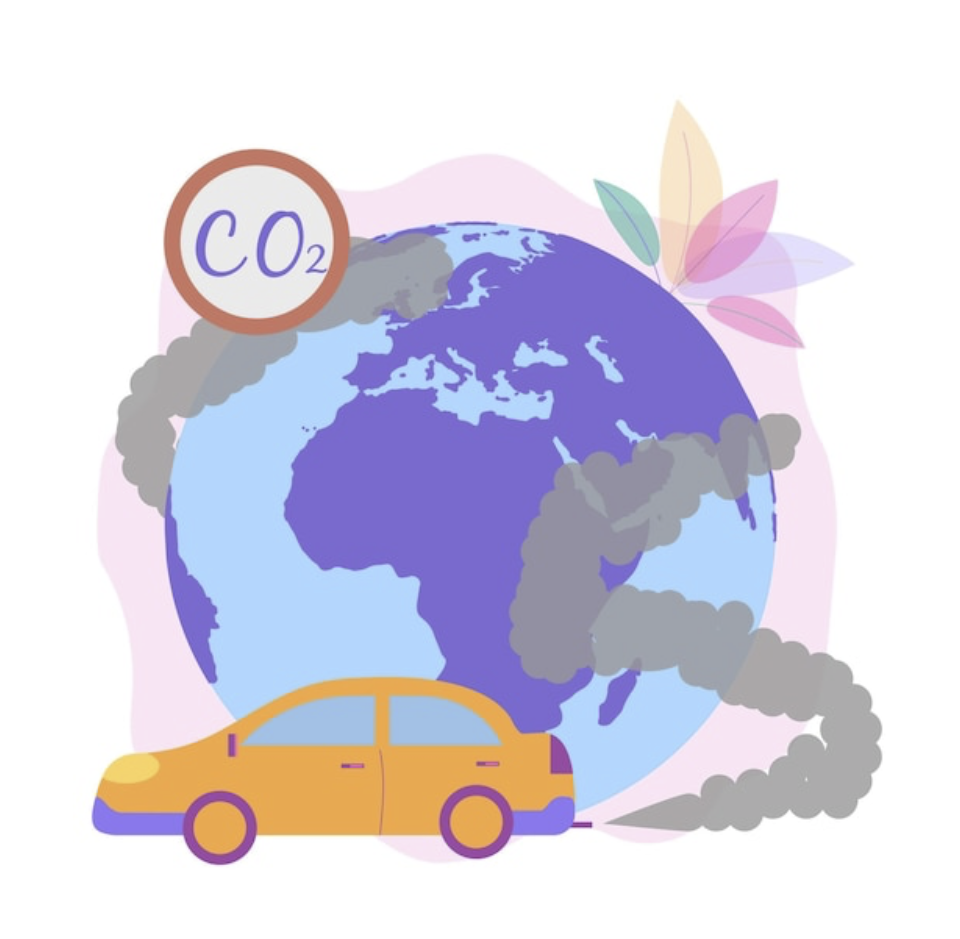Shopping malls, schools, hair salons and pharmacies – a common sight in front of all of these is rows upon rows of empty idling cars, with many people leaving their engines running to pop in for quick five-minute errands. Sometimes these cars really are left for ‘only’ five minutes, but sometimes quick errands turn into twenty or thirty minute sessions of car exhaust fumes being pumped needlessly into the air around us. As anyone who has been in a primary school science lesson is aware of, car fumes are a serious contributor to air pollution across the globe, and can cause many knockback effects on our health and wider environment. But, what exactly is the issue with leaving a car on for a while?
What does my family’s car change, when everyone else already leaves theirs on?
It’s an understandable decision – the Kuwait heat is infamously difficult to beat, and nobody wants to be met with a sweltering car after picking their children (or siblings) up from school, or getting a prescription refilled. However, the more eco-conscious of us already know that small changes as a collective can ensure a cleaner and safer environment for us all. What may seem like just another small addition to an already existing pollution problem is actually a contributing factor when one person’s small decision is scaled to a larger population.
To illustrate, one car’s idling engine can fill up (on average) 150 balloons with harmful emissions every minute (EnviroTech Online (Source)). One person may not be able to change everyone’s habits, but the first step to change is impacting your micro-environment in a positive way!
What is in car exhaust fumes, and why can it damage the environment and our bodies?
Car exhaust fumes may seem (and most definitely smell) like a jumble of unwanted gases that odour just about every parking lot in the world, but they’re actually quite a complex mix of different products of the combustion process of fuel within a car.
The most known component of car exhaust fumes would be carbon dioxide, which is harmful to the environment for it’s greenhouse gas effects. Essentially, for Earth to remain at a steady temperature and support life, our atmosphere needs to trap some heat that our planet receives from the sun. Carbon dioxide is part of what keeps that heat in, but (like greenhouse glass, for the eagle eyed readers) when too much is produced by human activities then too much heat is kept in the atmosphere and the Earth warms slightly.
Every organism on this planet is finely evolved to inhabit it’s environments, and for every degree Celsius that Earth warms, this fine tuned web of habitats and inhabitants unravels slightly. Problems such as melting glaciers, rising sea levels, bleached coral and the subsequent loss of biodiversity due to animals struggling to adapt to their changing environments are all caused by humans tipping the very precise scale of the atmosphere downwards. Carbon dioxide isn’t the only greenhouse gas in car fumes! Other notable GHG’s are produced such as nitrous oxide and methane.
Although this is worrying enough in and of itself, none of the gases mentioned so far are actually toxic to humans in the quantities they are produced within car exhaust fumes. Benzene, however, is one of those toxic vapours, a hydrocarbon that vapourises easily to turn into fumes in our air. It’s trademark sickly-sweet smell is usually enough to warn people away from prolonged exposure, which can cause heart palpitations, dizziness and eventually unconsciousness. Sulphur dioxide, too, has a strong rotten-egg odour, and causes irritation of the respiratory tract. A gas that doesn’t have the luxury of warning it’s cohabitors with a smell is carbon monoxide. The most dangerous by-product of a car’s engine, it has no smell and can cause severe symptoms in people exposed even to the smallest of concentrations. The recommended safe level is 0 ppm (parts per million) but the WHO warns against concentrations of as little as 30ppm exposure for an hour, to prevent serious poisoning incidents. (Carbon Monoxide Levels Chart (Source).)
How can I help reduce car-exhaust emissions?
The best way to spark change is to start small! Try and reduce the time that your family’s car engine spends running while still, especially during school pickups and dropoffs, and talk to friends and family to introduce them to the concept of climate change and air pollutants.
Only by campaigning for greater awareness and abidance to ecologically safe standards in car emissions will any improvement be seen. Our generation’s time to act starts now – will you help save our environment?


